Cargo ship: High winds affect Hoegh Osaka salvage operation
- Published
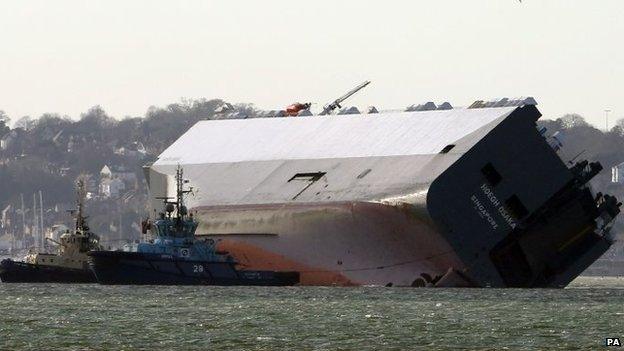
The ship has now been anchored to help control its movement as high winds are forecast
High winds are affecting the operation to salvage the cargo ship that ran aground in the Solent.
An operation to pump 3,000 tonnes of water out of the Hoegh Osaka is expected to last until Sunday.
But poor weather conditions has made it unsafe for the salvors to board on Saturday to finalise pumping arrangements.
High winds of up to 83mph during the night caused the vessel to drag anchor for approximately 100 metres.
The ship had been anchored to help control its movement.
Salvage company Svitzer described working conditions on board as "difficult".
The Hoegh Osaka has been secured two miles (3.2km) east of the Bramble Bank sandbank from which it freed itself on Wednesday.
Water, described as being "lightly contaminated with oil" is being pumped from the ship's hold, which salvers say will cause the ship's 50-degree list to decrease.
The film of oil on the water is believed to have come from vehicles held within the hold.
With no power from the ship's generators, the water is being discharged using portable pumps during daylight hours.
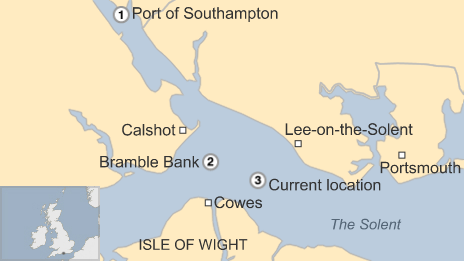
The Maritime and Coastguard Agency (MCA) said there was no evidence of any pollution.
Divers are also waiting until conditions improve to complete an inspection of the hull which began yesterday.
The Queen's Harbour Master has introduced an exclusion zone of 984ft (300m) around the vessel, currently held by tugs between Cowes and Lee-on-Solent.
Speaking at a press conference on Thursday, Hugh Shaw, the Secretary of State's representative for maritime salvage and intervention, said: "I've got confidence the salvors can discharge the bulk of the water from sucking underneath the oil and that will leave us with a small quantity of oil on board the vessel."
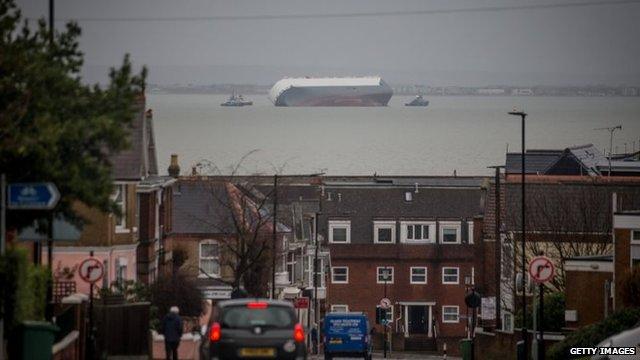
The ship is being held between Cowes and Lee-on-the-Solent
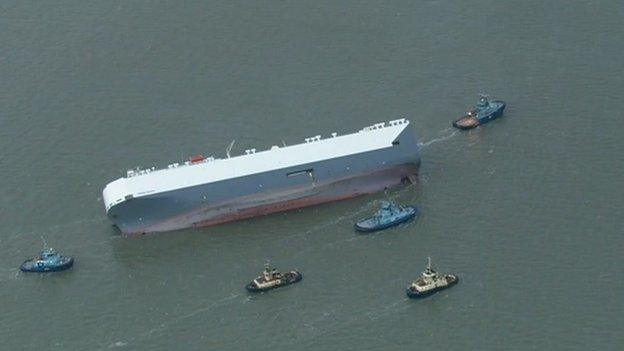
The vessel was dragged two miles to a deep water location
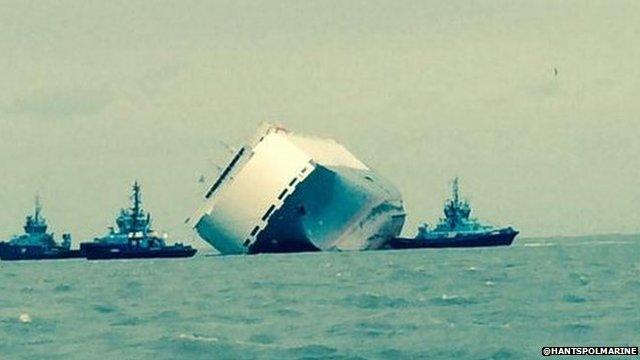
Three tug boats towed the vessel east
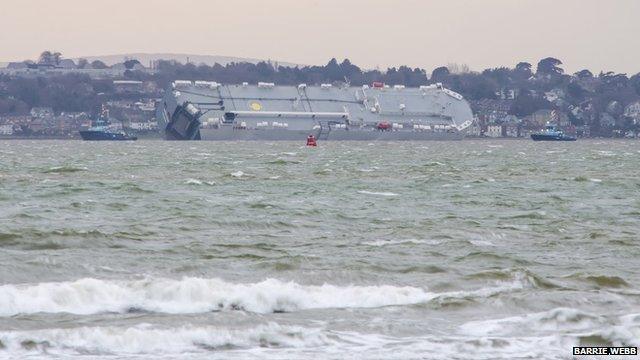
The salvage operation could be hampered by bad weather

Salvage experts from Svitzer boarded the ship on Monday and began carrying out an assessment to form a rescue plan
The 51,000-tonne vehicle transporter "refloated" itself unexpectedly at 14:00 GMT on Wednesday due to the high tide.
It was towed two miles east of Bramble Bank, where it was grounded on Saturday.
At a news conference on Tuesday, Bram Sperling of Svitzer, said there was some water inside because of a "small opening in the vessel" that had since been closed.
A refloat was the preferred option to avoid further damage to the ship from the sandbank.
Salvage experts boarded the ship on Monday and began carrying out an assessment to form a rescue plan.
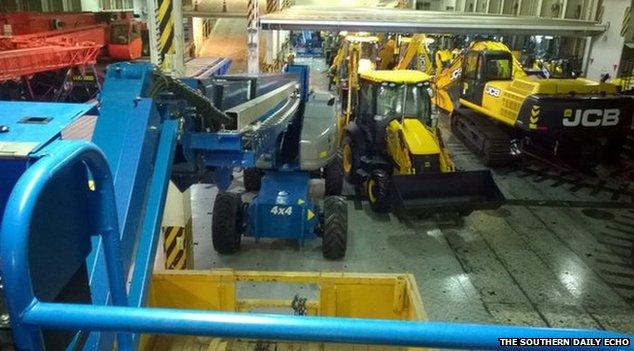
JCBs destined for the Middle East are among the machinery on board the stranded vessel, shown before the ship left Southampton
The Singapore-registered transporter set sail for Germany at about 20:20 on Saturday, shortly before being deliberately run aground by the crew after it unexpectedly started to list.
There were 1,400 cars on board, including 1,200 Jaguar and Land Rover vehicles and 65 Minis, as well as 105 JCB machines and 500 tonnes of fuel.
Two crew members out of 25 rescued by RNLI Lifeboats and the Solent Coastguard on Saturday suffered non-life threatening injuries.
Two senior officers and a pilot stayed on board before being taken ashore.
- Published7 January 2015
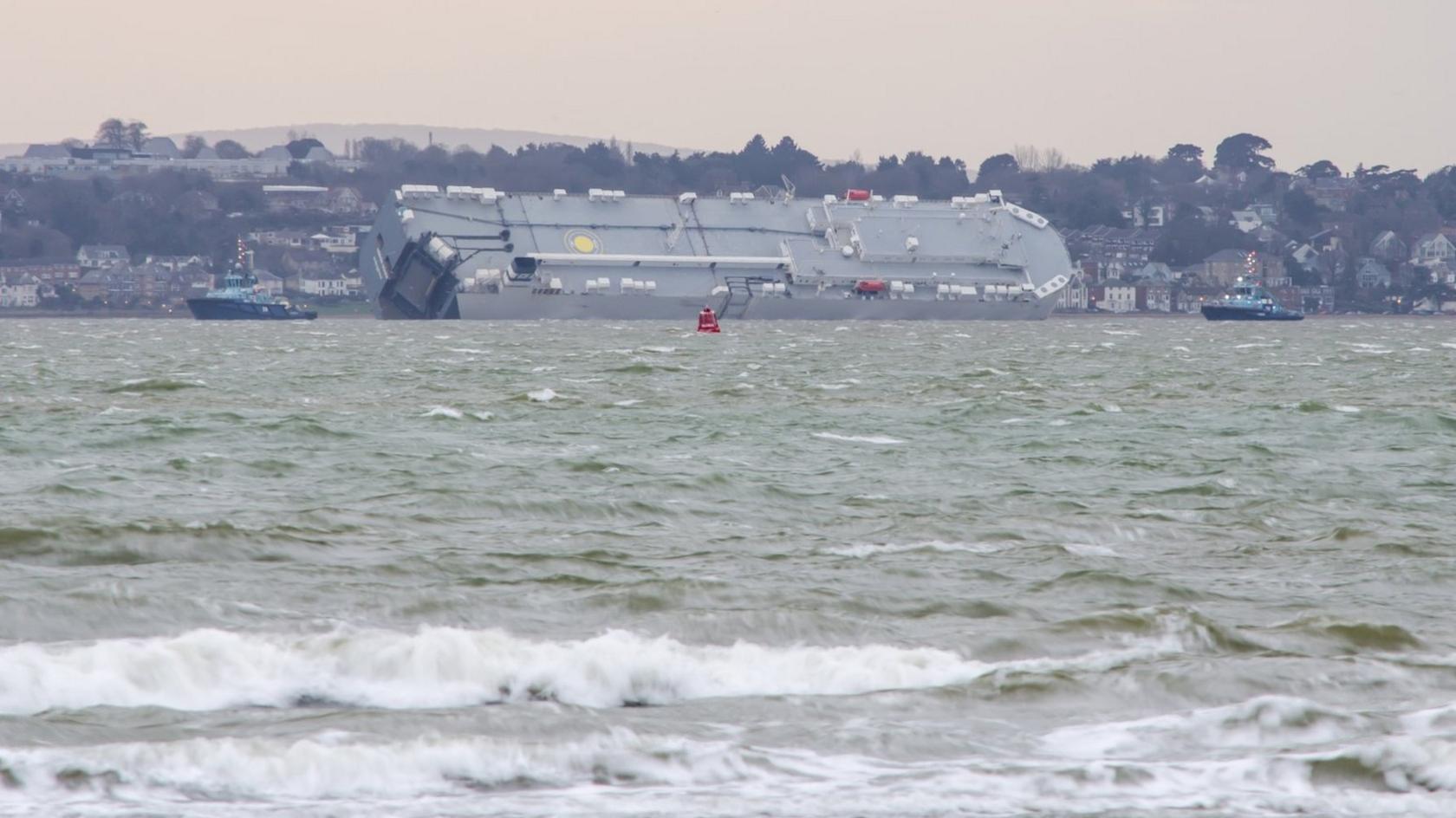
- Published7 January 2015
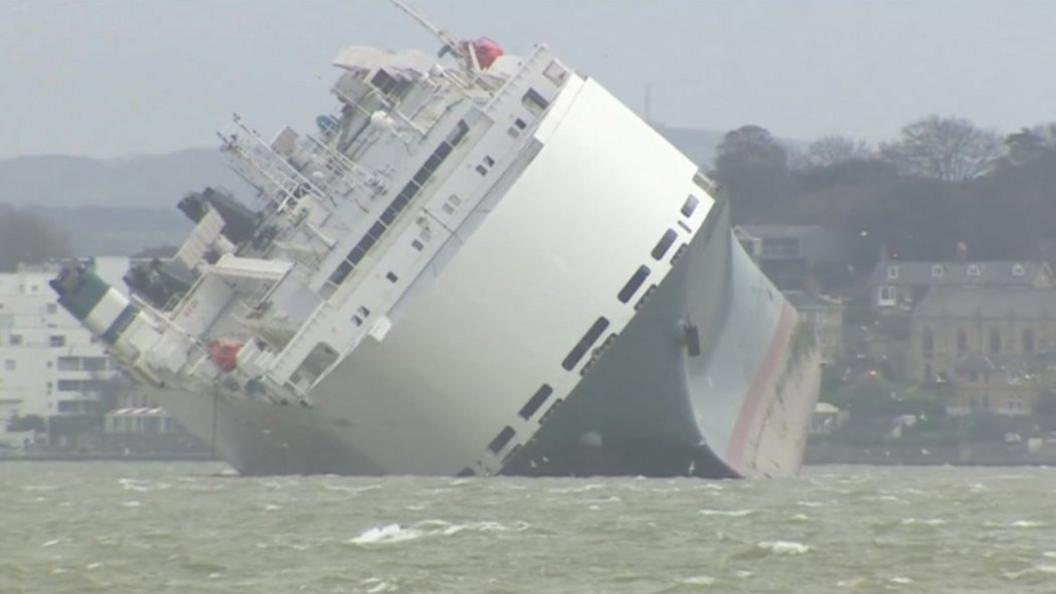
- Published6 January 2015

- Published6 January 2015

- Published5 January 2015
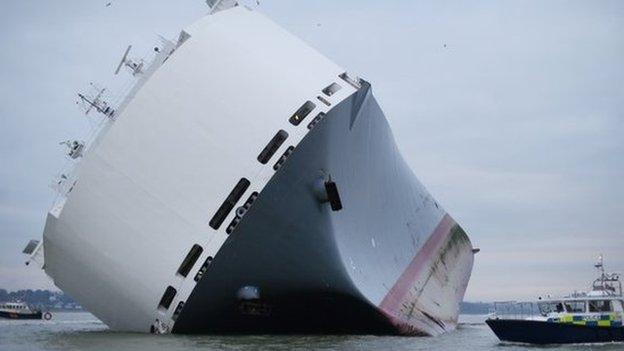
- Published5 January 2015
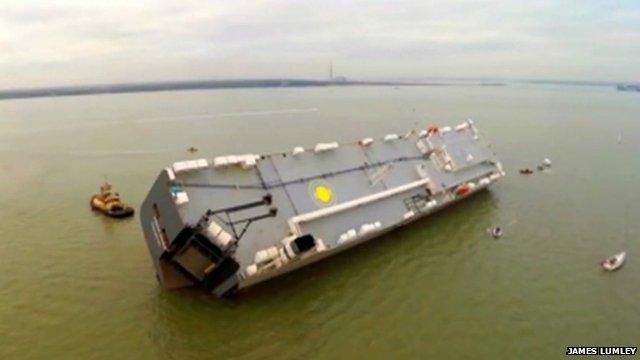
- Published4 January 2015
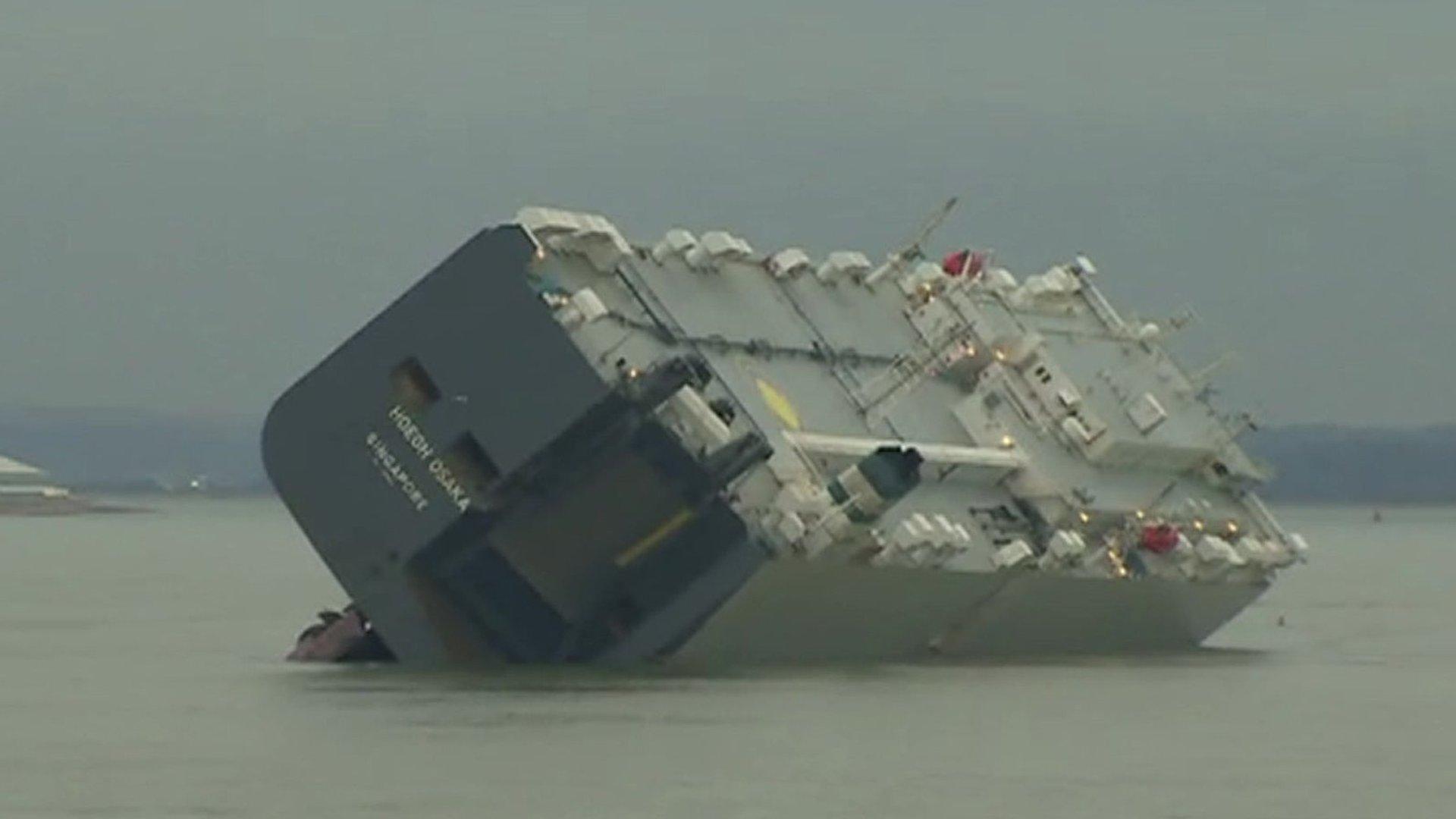
- Published4 January 2015
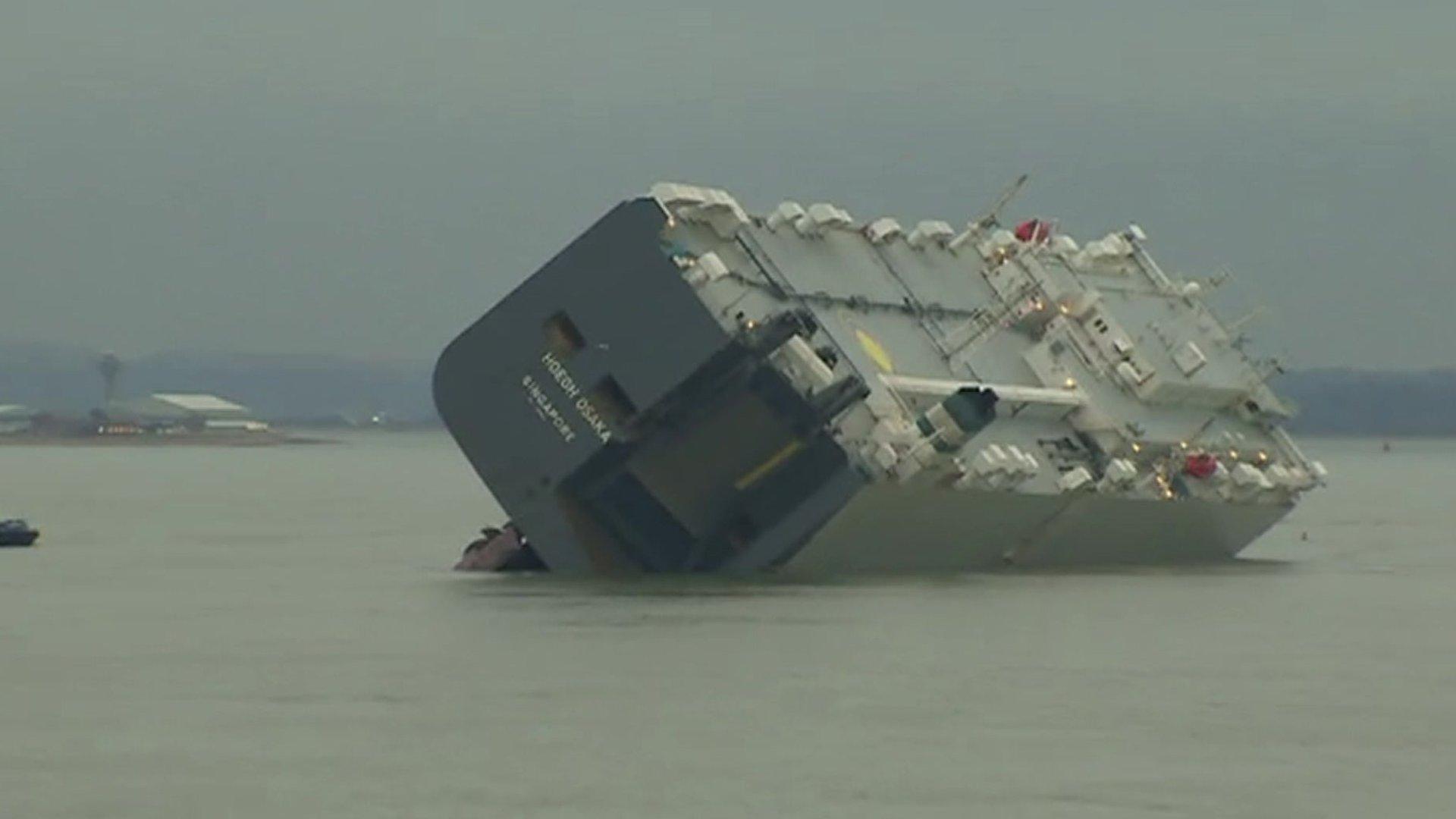
- Published4 January 2015
